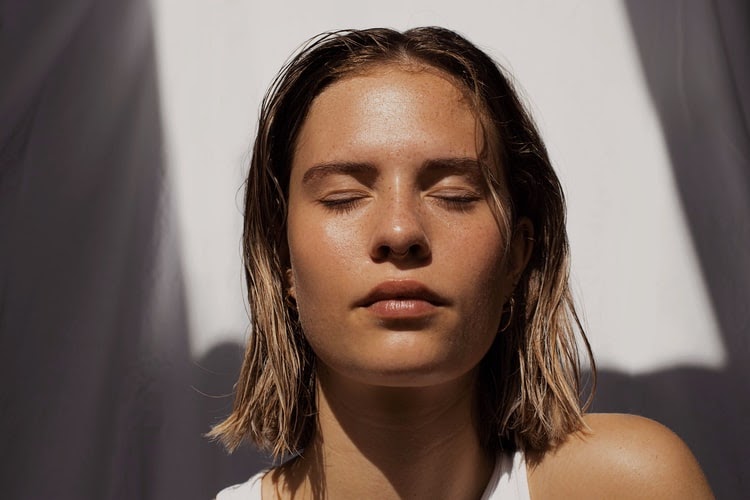
29 Jan What do you need for a skin care routine? Here’s how to build one from scratch!
One of the most popular topics of the last few years, skincare has risen from the realms of dermatologist-only to everyday necessity and is here to stay.
Although we’re constantly being presented with the latest products, tools and innovations, what do you need for a skin care routine when you’re just starting out?
Fret not: if you’re just starting out, we’re here to show you exactly what is needed in a skin care routine so you can craft the perfect regimen for your own skin.
Why do I need a skin care routine?
Our skin is an organ. In fact, it’s our largest organ and one of the most important parts of us, protecting us from heat, light and infections.
Our skin also comes up against multiple aggressors daily, from the sun’s harmful UV rays to the pollution in our cities, which can prematurely age it and even cause serious problems like skin cancer. When you add in junk foods, cigarette smoke, and even other products you’re using, you have a potential recipe for disaster.
A solid, consistent skin care routine designed for your skin type is the best possible way to not only protect your skin, but to keep it looking healthy, radiant and smooth.
What type of skin do I have?
Skin types can vary for every single one of us, but typically fall under five main categories.
- Oily
- Dry
- Combination
- Normal
- Sensitive
If you’re wondering how to check your skin type, there’s one simple trick that will point you in the right direction. Simply wash your face, and don’t apply anything: in a few hours, feel your skin.
Is it greasy? If you feel grease forming all over your face, you likely have oily skin.
Does it feel dry? If your skin feels tight and dehydrated, you likely have dry skin.
Is it both? If your skin feels greasy in parts and dry in others, it’s likely combination skin. This is most commonly found as oiliness around the chin, nose and forehead and dryness elsewhere.
Was it red and irritated when you washed it? You might have sensitive skin, which can be combined with any of the above skin types.
If you’re wondering how to find the right skin care for you, skin type is the best starting point.
What products do I need in a skin care routine?
When starting out from scratch with your skin care routine, you want to make sure you pick out a few basic must-have products to kick things off.
A makeup remover
If you’re a makeup wearer, just using your basic cleanser once won’t be enough to get your skin properly clean – the same goes for if you wear a thick moisturiser or SPF daily!
Double cleansing not only gets rid of every trace of makeup or product, it take off any surface grime and allows your second cleanser to really clean deep down.
Don’t be tempted by the notorious makeup wipe: they’re not only bad for our skin and don’t nearly cleanse it enough, they’re awful for the environment too.
The best type of cleansers to remove makeup are thick, rich and emollient and can break down stubborn products like waterproof mascara. These are our favourite makeup removers for each skin type – if your skin is normal, or combination, just pick your favourite!
- Oily skin:
Although it sounds counterintuitive, an oil cleanser is perfect for removing makeup and grime from oily skin without stripping it of hydration.
- Dry skin:
A rich cleansing balm will remove makeup whilst nourishing and protecting dry skin types.
- Sensitive skin:
A micellar water made specifically for sensitive skin will gently remove makeup and not upset your sensitive skin.
A cleanser
Now for the second part of your double cleanse!
We recommend following up your makeup-removing first cleanse with a gel, foam or cream cleanser that will unclog pores and whisk away any remaining grime.
The world is your oyster when it comes to choosing a second cleanser, but as a general rule of thumb, the more it foams the more stripping it’s likely to be, so dry skin types will benefit from creamier cleansers.
An exfoliator
Now that your skin is completely clean, it’s time to exfoliate!
It may conjure up mental images of sugary scrubs, but these days skin exfoliants are far more sophisticated. We recommend always choosing a chemical exfoliant over a physical exfoliant for the skin on your face.
What is a chemical exfoliant?
Whilst physical exfoliants rely on beads, sugars and other small particles to manually scrub dead skin off your face, a chemical exfoliant instead uses acid to gently melt it away.
It sounds scary, but it’s actually much better for your skin and doesn’t cause any scratches or micro-cuts like scrubs can.
Look out for glycolic acid, lactic acid, salicylic acid and mandelic acid toners.
A treatment serum
Your skin is now in the best possible state for receiving a serum: this is where you can add in intense skin treatments to target any specific skin concerns you might have.
Like cleansers, there are a huge number of specific serums out there, but two are non-negotiable in almost any skin care routine.
Retinol serum
A derivative of Vitamin A, retinol is a wonder ingredient that solves a whole host of skin complaints. It can clear acne, reduce fine lines and wrinkles, fade dark spots and scarring and brighten your complexion.
The downside? Your skin needs time to grow accustomed to retinol, so starting slow is the way to go. Opt for a gentle concentration (0.3% or less) and only apply twice per week to start, building both up over time.
Vitamin C serum
This anti-oxidising ingredient not only brightens your skin, it helps with fine lines and wrinkles and acne too! Vitamin C serums come in many different forms, so choose a formula that will work with your skin type.
Beauty Savers tip:
To get maximum results from both serums, don’t apply them at once! We recommend using your Vitamin C serum in the morning, and your Retinol at night.
A moisturiser
The icing on the cake, a moisturiser helps your skin retain moisture, adds extra hydration where needed and helps protect it from weather and pollution.
Again, opt for a formula that works with your skin type, and keep an eye out for hydration boosting ingredients like hyaluronic acid, ceramides, shea butter and glycerin.
- Oily skin:
A lightweight gel moisturiser works best for oily skin. Look out for mattifying moisturisers if you can’t stand grease!
- Dry skin:
A rich, creamy moisturiser will help dry skin cope throughout the day.
- Sensitive skin:
Look for a moisturiser with a short, simple ingredients list.
An SPF
A good SPF is a must-have in every single skin care routine out there. Not to be skipped, even on cloudy days spent indoors, SPF is necessary to protect your skin from harmful UV rays. It’s the ultimate preventative when it comes to skin cancer, ageing and sun damage.
Look for an SPF of between 30 and 50; nothing below this range will provide enough protection for the delicate skin on your face. There are two main types of SPF:
Physical SPF
This is made of minerals that physically block the sun’s rays. They’re usually referred to as mineral SPF.
Chemical SPF
This uses specific chemicals that absorb the sun’s rays and protect our skin from them. They’re usually not referred to as anything specific, other than SPF!
Beauty Savers tip:
It’s recommended that you use ‘two fingers’ worth of SPF on your face and neck daily. To measure this out, simply squirt out enough product to cover the underside of your index and middle fingers!
Your ultimate skin care routine:
- Morning:
Foaming cleanser
Vitamin C serum
Moisturiser
SPF
- Evening:
Makeup remover
Foaming cleanser
Retinol
Moisturiser
So there you have it: how to make a skin care routine! Knowing how to find the right skin care products is half the battle. Now comes the fun part – shopping for them!




No Comments